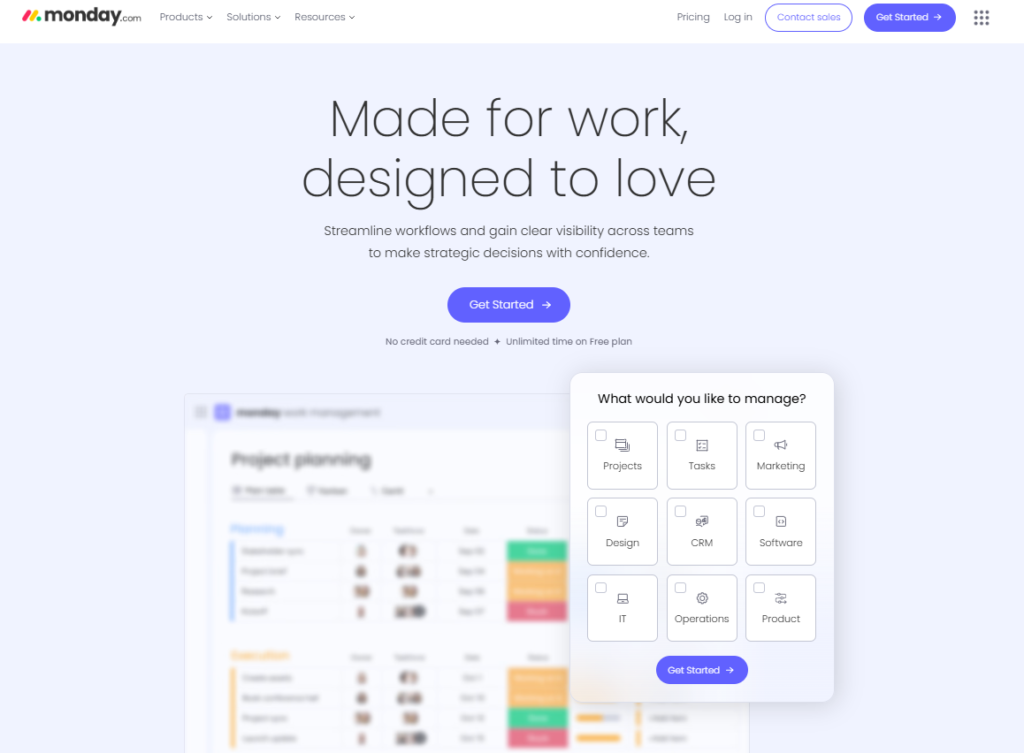For More Free Videos, Subscribe to the Rhodes Brothers YouTube Channel.
Feeling overwhelmed by the idea of making money online? Think it’s only for tech geniuses or those with years of experience? Think again! This post will reveal a surprisingly simple, three-step process to generate your first online dollar, even if you stumble along the way. We’ll turn those perceived failures into stepping stones to success, building a foundation for lasting online income.

John S. Rhodes of the Rhodes Brothers famously said, “Failure is not negative; failure is good. Failing fast is just fabulous.” This philosophy is the cornerstone of our approach. We’re not just talking about avoiding mistakes; we’re embracing them as valuable learning experiences.
Did you know that 90% of startups fail? But those failures aren’t necessarily the end of the road. Many successful entrepreneurs have learned more from their failures than their successes. This post will show you how to leverage that learning to build a profitable online business.
TL;DR
- Embrace Failure: Intentionally work towards failure to identify obstacles and learn from mistakes. Document everything!
- Document Your Process: Write down every step, both successes and failures. This creates a valuable case study and identifies objections.
- Share Your Journey: Transform your documented process (failures included!) into a streamlined product or service that helps others avoid your mistakes.
The 3-Step Process to Your First Online Dollar
This isn’t about overnight riches; it’s about building a solid foundation. Let’s break down each step in detail:
Step 1: Embrace the Inevitable Failure (and Learn From It!)
This might sound counterintuitive, but actively seeking failure is crucial. Why? Because failure reveals the hidden problems, the roadblocks, and the objections that prevent success. Think of it as an accelerated learning curve.
- Take Action: Stop overthinking and start doing. Choose a niche, create a simple product (e.g., an ebook, a course, a service), and launch it. Expect to fail.
- Document Everything: Keep a detailed journal. Note every mistake, every obstacle, every objection you encounter. Use a tool like Google Docs, Notion, or even a simple notebook.
- Analyze Your Failures: Don’t just list your failures; analyze them. Why did things go wrong? What could you have done differently? This is where the real learning happens.
Example: Let’s say you’re creating an ebook. You might fail to get enough traffic, find your pricing is too high, or discover your marketing message is ineffective. Document all of these failures meticulously.
Remember what John S. Rhodes said: “Failing fast is just fabulous.” The faster you fail, the faster you learn and improve. It’s like a scientist conducting experiments – some will fail, but the data gathered informs future successes.
Step 2: Document Your Entire Process (The Good, the Bad, and the Ugly)
Now that you’ve experienced some failures, it’s time to document everything. This isn’t just about recording your successes; it’s about creating a comprehensive case study that includes all the challenges you faced.
- Detailed Process Documentation: Write down every single step involved in your process, from initial idea to final product/service delivery. Include time spent on each task.
- Identify Objections: As you document your process, you’ll uncover common objections your potential customers might have. These are gold! Addressing them directly in your marketing and product development is key.
- Streamline Your Process: Once you’ve documented everything, analyze your process for inefficiencies. Can you simplify any steps? Can you automate any tasks?

Tools: Use project management tools like Trello, Asana, or Monday.com to organize your documentation.
This detailed documentation is incredibly valuable. It allows you to:
- Create a Case Study: Share your journey, including your failures, to build trust and credibility with potential customers.
- Develop FAQs: Use your documented objections to create a comprehensive FAQ section for your product or service.
- Identify Opportunities: By analyzing your process, you’ll identify areas for improvement and potential new product/service offerings.
“The only way to do great work is to love what you do.” – Steve Jobs. By documenting your entire process, you’ll gain a deeper understanding of your work, and that understanding will fuel your passion and motivation.
Step 3: Share Your Pain (and Your Path to Success)
Now comes the fun part: sharing your story. People connect with authenticity. By sharing your struggles and triumphs, you build a connection with your audience and establish yourself as an expert.
- Create Content: Use your documented process to create valuable content. This could include blog posts, videos, ebooks, or social media updates.
- Highlight Your Failures: Don’t shy away from your failures. They are powerful teaching moments. Share what you learned and how you overcame the challenges.
- Showcase Your Streamlined Process: Present your refined process as a solution to the problems you documented. This could be a product, service, course, or coaching program.
- Build a Community: Engage with your audience. Answer their questions, provide support, and build relationships.
This step is all about turning your journey into a valuable asset. You’re not just selling a product; you’re selling a transformation, a solution, a path to success.
Actionable Steps and Direct Advice: A Deeper Dive
Let’s expand on the actionable steps, tailoring them to different demographics and experience levels. Remember, the core principle remains consistent: embrace failure, document everything, and share your journey.
For Beginners: Building Your Foundation
Starting from scratch can feel daunting, but it’s also incredibly liberating. You’re not burdened by past failures or complex systems. This is your chance to build something simple, sustainable, and profitable.
- Identify Your Skillset: What are you naturally good at? What do you enjoy doing? Your passion will fuel your persistence. Begin with a skill you already possess, even if it seems small or insignificant. Can you write well? Create an ebook. Are you a whiz at organizing? Offer virtual organizing services. Do you love baking? Sell your baked goods online.
- Choose One Platform: Avoid spreading yourself too thin. Focus on mastering one platform initially. YouTube is great for video tutorials or product reviews. Etsy is ideal for handmade crafts or digital downloads. If you’re comfortable with technology, consider building a simple website using platforms like Wix or Squarespace.
- Create a Minimum Viable Product (MVP): Don’t strive for perfection. Create a basic product or service that meets a core need. You can always refine and expand it later. For an ebook, aim for 20-30 pages. For a service, offer a limited package.
- Start Small, Scale Later: Begin with a small marketing effort. Tell your friends and family about your product or service. Use free social media platforms to reach a wider audience.
- Embrace Feedback: Actively solicit feedback from your early customers. Use this feedback to improve your product or service. Don’t be afraid to make changes based on what your customers are telling you.
Example: Let’s say you’re a beginner with a passion for knitting. Your MVP could be a simple pattern for a beginner-friendly scarf. You could sell it on Etsy, using free social media marketing to reach potential customers.
For Millennials: Leveraging the Power of Social Media
Millennials are digital natives, making social media a powerful tool for building a brand and connecting with your audience.
- Choose Your Platforms Wisely: Focus on the platforms where your target audience hangs out. TikTok is great for short, engaging videos. Instagram is ideal for visually appealing content. YouTube is perfect for longer tutorials or product demonstrations.
- Create Engaging Content: Don’t just sell your product or service; create content that adds value to your audience’s lives. Share tips, tutorials, behind-the-scenes glimpses, and relatable stories.
- Build a Community: Engage with your followers. Respond to comments, answer questions, and foster a sense of community around your brand.
- Collaborate with Influencers: Partner with other creators in your niche to reach a wider audience.
- Use Relevant Hashtags: Research relevant hashtags to increase the visibility of your content.
- Run Contests and Giveaways: Increase engagement by running contests and giveaways.
Example: A millennial passionate about sustainable living could create TikTok videos showcasing eco-friendly products, building a community around sustainable practices.
For People Nearing Retirement: Building Passive Income Streams
For those nearing retirement, the goal is often to create passive income streams that provide financial security without demanding constant active work.
- Leverage Existing Knowledge and Skills: What are you knowledgeable about? What skills have you developed over your career? These can be transformed into valuable online products or services.
- Create Digital Products: Ebooks, online courses, and templates are excellent options for generating passive income. They require upfront effort but can generate income for years to come.
- Affiliate Marketing: Promote other people’s products or services and earn a commission on each sale. This requires less upfront effort but demands ongoing marketing and promotion.
- Invest in Your Online Presence: Create a professional website or online store to showcase your products or services.
- Automate Your Processes: Use email marketing automation tools to nurture leads and promote your products or services.
Example: A retiree with extensive experience in gardening could create an online course teaching beginner gardening techniques, generating passive income through course sales.
Remember, regardless of your age or experience level, the core principles remain the same: embrace failure, document your journey, and share your expertise with the world. The path to your first online dollar might be bumpy, but the rewards are well worth the effort.
Common Mistakes to Avoid: Learning from Others’ Missteps
Let’s delve deeper into the common pitfalls that can derail your online entrepreneurial journey. Avoiding these mistakes will significantly increase your chances of success.
-
Perfectionism: The Paralysis of Analysis
The pursuit of perfection is a common enemy of progress. It’s easy to get bogged down in details, endlessly tweaking and refining your product or service, never actually launching it. This is what’s known as “paralysis by analysis.”
- The Problem: Perfectionism leads to procrastination and missed opportunities. You might spend months (or even years) perfecting your product, only to discover that the market has changed or your initial assumptions were wrong.
- The Solution: Embrace the Minimum Viable Product (MVP) philosophy. Launch a basic version of your product or service, gather feedback, and iterate based on that feedback. Perfection is an ongoing process, not a destination. Think of your initial launch as version 1.0 – there will be many more versions to come.
Example: Instead of spending months perfecting a 100-page ebook, launch a 20-page version. Gather feedback from your readers and use that feedback to improve future versions. You can always add more content later.
-
Lack of Documentation: Losing Valuable Lessons
Thorough documentation is not just about keeping records; it’s about capturing valuable lessons learned, both from successes and failures. Without documentation, you’re likely to repeat the same mistakes.
- The Problem: Without documenting your process, you’ll struggle to identify patterns, analyze your successes and failures, and improve your efficiency. You’ll also miss opportunities to create valuable content based on your experiences.
- The Solution: Develop a system for documenting every aspect of your online business. This could include a project management tool (like Trello or Asana), a spreadsheet, or a simple notebook. Document your successes, failures, customer feedback, marketing strategies, and everything in between.
Example: If you’re running a social media marketing campaign, document the specific strategies you used, the results you achieved, and any lessons learned. This documentation will be invaluable for future campaigns.
-
Ignoring Feedback: Missing Crucial Insights
Customer feedback is a goldmine of information. Ignoring it is a recipe for disaster. Your customers are telling you what works and what doesn’t. Pay attention!
- The Problem: Ignoring feedback means you’re missing out on valuable insights that can help you improve your product, service, and marketing strategies. It can lead to customer dissatisfaction and lost sales.
- The Solution: Actively solicit feedback from your customers. Use surveys, feedback forms, and social media to gather information. Analyze the feedback and use it to make improvements. Respond to negative feedback professionally and constructively.
Example: If customers are complaining about a specific feature of your product, consider addressing that issue in a future update. If they’re confused by your marketing message, revise it to be clearer and more concise.
-
Not Sharing Your Journey: Hiding Your Authenticity
Authenticity builds trust and connection. Don’t be afraid to share your struggles and successes with your audience. People connect with real people, not polished perfection.
- The Problem: Presenting a flawless image can make you seem inauthentic and unrelatable. It prevents you from building a genuine connection with your audience.
- The Solution: Share your journey openly and honestly. Talk about your failures, your challenges, and your triumphs. This will make you more relatable and build trust with your audience. Show your human side!
Example: Share a blog post about a time you failed and what you learned from it. Create a video showcasing the behind-the-scenes work that goes into creating your product or service. Be vulnerable and authentic.
By avoiding these common mistakes, you’ll significantly increase your chances of success in your online entrepreneurial journey. Embrace the learning process, and celebrate your progress along the way.
Frequently Asked Questions
How do I choose a niche?
Select a topic you’re passionate about and knowledgeable in. Research the market to ensure there’s demand for your product or service.
What if I don’t have any technical skills?
Focus on creating products or services that don’t require advanced technical skills. Plenty of opportunities exist for non-technical entrepreneurs.
How much money do I need to get started?
You can start with very little or even no money. Focus on leveraging free resources and building your skills before investing significant capital.
How do I find my audience?
Use social media, content marketing, and other strategies to reach your target audience.
How do I market my product or service?
Use a combination of organic and paid marketing strategies. Experiment to find what works best for you.
How long does it take to make my first dollar?
It varies greatly depending on your efforts, niche, and marketing strategies. Focus on consistent effort and continuous improvement.
What if I fail repeatedly?
Embrace the failures! Analyze them, learn from them, and adjust your approach. Persistence is key.
What kind of products can I sell online?
Ebooks, online courses, coaching services, digital downloads, affiliate products, and more.
What are some free tools I can use?
Google Docs, Canva, YouTube, social media platforms, and many more.
How can I stay motivated?
Set realistic goals, celebrate small victories, and surround yourself with supportive people.
Unlocking Your Online Potential
This three-step process, grounded in the philosophy of embracing failure and documenting your journey, is your blueprint to success. It’s not about avoiding mistakes; it’s about learning from them. By documenting your process, you’ll create a valuable asset that can help others—and generate income for you. Get started today! Take that first step, even if it feels shaky. You’ve got this!
For more valuable insights and strategies to help you succeed online, be sure to check out and subscribe to the Rhodes Brothers YouTube Channel for the latest videos and information.
Resource List
Book: The Lean Startup by Eric Ries
Book: Zero to One by Peter Thiel
Course: Skillshare (various online courses)
Course: Udemy (various online courses)
Podcast: The GaryVee Audio Experience
Podcast: Entrepreneurs on Fire
Tool: Google Analytics
Tool: SEMrush
Tool: Canva
Tool: Trello
Tool: Asana
Tool: Google Keyword Planner
Tool: Ahrefs
Tool: Mailchimp
Tool: Stripe
Tool: PayPal



